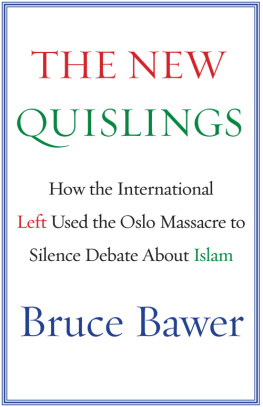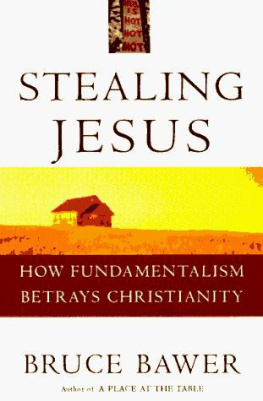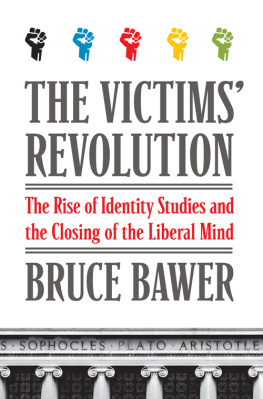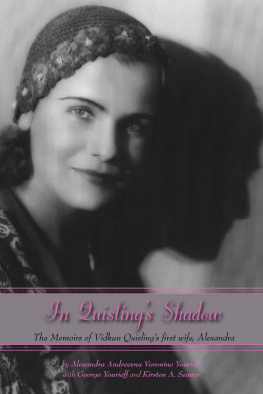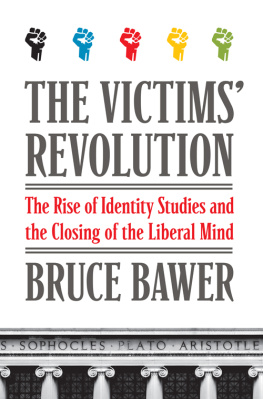I
On the morning of Friday, July 22, 2011, I was in a friends house in the United States chatting on Skype with my partner in Norway. Oh my God, he suddenly said. Theres been an explosion in Oslo.
He had a newspaper website open. I went at once to the same site and saw a giant headline and a horrific picture. I immediately opened the website of Norwegian state television, NRK, and began to watch its live coverage online.
The images of devastation were staggering. A government building, one of the tallest structures in Oslo, had sustained major damage, and the streets around it were filled with debris. There were reports of casualties, though the numbers were, as yet, unknown. The explosion had been so powerful that windows had been blown out of stores and offices blocks away.
I was stunned. The government building that had been damaged was right down the street from where I had, until recently, lived. I had passed it almost every day for years, either on foot or on a bus. It was numbing to see Oslo, my longtime home, suffering a fate so similar to that which my native city, New York, had suffered in 2001.
The first thing I did was to contact my friends in Oslo, to ensure they were all okay. They were, although a couple of them had been very close to the explosion when it took place, and several of them had felt the power of the blast, even from some distance away.
Then I began to look at every Norwegian news website I could think of, and watched NRK, Norwegian TV2, CNN, and Al Jazeera online. (I didnt have a TV at hand.) Within an hour, it was confirmed that the explosion had been the result of a bombing. Initial reports said that it bore all the earmarks of a jihadist attack. Nobody publicly disputed this conclusion.
Then, suddenly, came reports of another event. Shots had been fired a half hour or so west of Oslo, on an island called Utya, where the annual summer camp for Workers Youth Leaguethe Labor Party youth organizationwas under way. The first details were sketchy. Young campers on the island, apparently, were telephoning their parents and begging them frantically to call the police. A gunman, they said, was shooting their friends down in cold blood. When he had first come ashore, wielding a huge gun, he had pretended to be a cop, come to safeguard them in the wake of the explosion in Oslo. Then he had started firing at unarmed teenagers. According to an article by sne Seierstad published weeks later in Newsweek , he shout[ed] Hurray! Bulls-eye! or Got you! as he slew his victims. Kids were running, hiding in the woods, hysterical, in shock. There was nobody there with a gun to protect them, and no easy means of getting off the island. One minute they had been living in a pastoral idyll: the next minute they had been plunged into a nightmare. And they had no idea why it was happening.
Since I had lived in Norway for many years and had written a great deal about Islam, my inbox soon began to fill with emails from editors asking me to write about this atrocity. I agreed to submit pieces both to the Pajamas Media (now PJMedia) website and to the Wall Street Journal opinion page. I began working on the Pajamas piece while listening to the Norwegian news and crying incessantly.
I had already finished a draft when the news came that the attacks were not, after all, the work of jihadists. Instead, the perpetrator was an ethnic Norwegian named Anders Behring Breivik, who claimed that his actions were motivated by anti- jihadist sentiment.
In the piece I ended up sending to Pajamas Media I noted that one Norwegian newspaper had observed that the July 22 death toll was higher than at Columbine and Virginia Tech combined. The Norwegian media, I pointed out,
have always reported on mass murders by lone gunmen in the U.S. as if they were things that could never happen in Norway: rather, they were symptoms of a sick society that Norwegians could never possibly understand. In Norway, they use the term amerikanske tilstanderAmerican conditions. It never means anything good. Yesterdays nightmare, from a Norwegian perspective, was the most American of American conditions.
I also wrote that while virtually everybody had assumed at first that the attacks in Oslo were the work of jihadists, it wouldve been just plain dumb for Islamists to make an enemy of Norway, given that the Norwegian government and cultural elite had been making friendly gestures for years to even the most extreme elements of Islam: theyd treated their Jews shabbily, coddled resident terrorist Mullah Krekar, squelched domestic criticism of Islam, dropped Muslim riots down the memory hole, and openly supported terrorist groups. I concluded the piece as follows:
... it is deeply depressing to see this evil, twisted creature become the face of Islam criticism in Norway. Norwegian television journalists who in the first hours of the crisis were palpably uncomfortable about the prospect of having to talk about Islamic terrorism are now eagerly discussing the dangers of Islamophobia and conservative ideology and are drawing connections between the madness and fanaticism of Breivik and the platform of the Progress Party. Yesterdays events, then, represent a double tragedy for Norway. Not only has it lost almost one hundred people, including dozens of young people, in a senseless rampage of violence. But I fear that legitimate criticism of Islam, which remains a very real threat to freedom in Norway and the West, has been profoundly discredited, in the eyes of many Norwegians, by association with this murderous lunatic.
As the day wore on, it quickly emerged that Breivik had been an avid reader of a website called document.no, where he had posted a number of comments.
There are a couple of major websites that regularly address Norways immigration and integration policy and its attendant problems. One of them is rights.no, the site of Human Rights Service, a small Oslo-based think tank for which I have worked on and off for several years as a writer, editor, translator, and consultant. Their focus is on the rights of women and girls in Norway and Europe, especially in Muslim communities, and their mission is to develop proposals for new laws and government programs. HRSs information director, Hege Storhaug, has appeared countless times on Norwegian TV debate programs, and has become a very familiarand polarizingfigure; while many ordinary citizens have relished her bluntness about the failures of Norwegian immigration and integration policies, members of the cultural elite have tended to balk at her blithe violation of long-standing boundaries as to what can and cannot be said. For years, multiculturalists who frown on any mention of Muslim community problems have savaged HRS as racist and Islamophobic and have battled to remove its government funding. HRSs website features regular news commentaries in Norwegian and English by Hege and managing director Rita Karlsen; it has also published original articles about Islam, immigration, and integration by contributors from around the world, such as Robert Redeker in France and Henryk Broder in Germany.
Another website that addresses immigration and related issues is document.no, edited by my friend Hans Rustad. Unlike HRSs website, document.no is not connected to any larger organization, and its focus is not on the rights of Muslim women and girls (although this is certainly among its concerns) but on the threat that unreconstructed Islam and failed immigration and integration policies pose to the West. Like rights.no, it is a serious, intelligent, and respectable site that respects the facts and has never dealt in vulgar Muslim-bashing. Unlike HRSs website, it allows readers to post comments on its articles.


